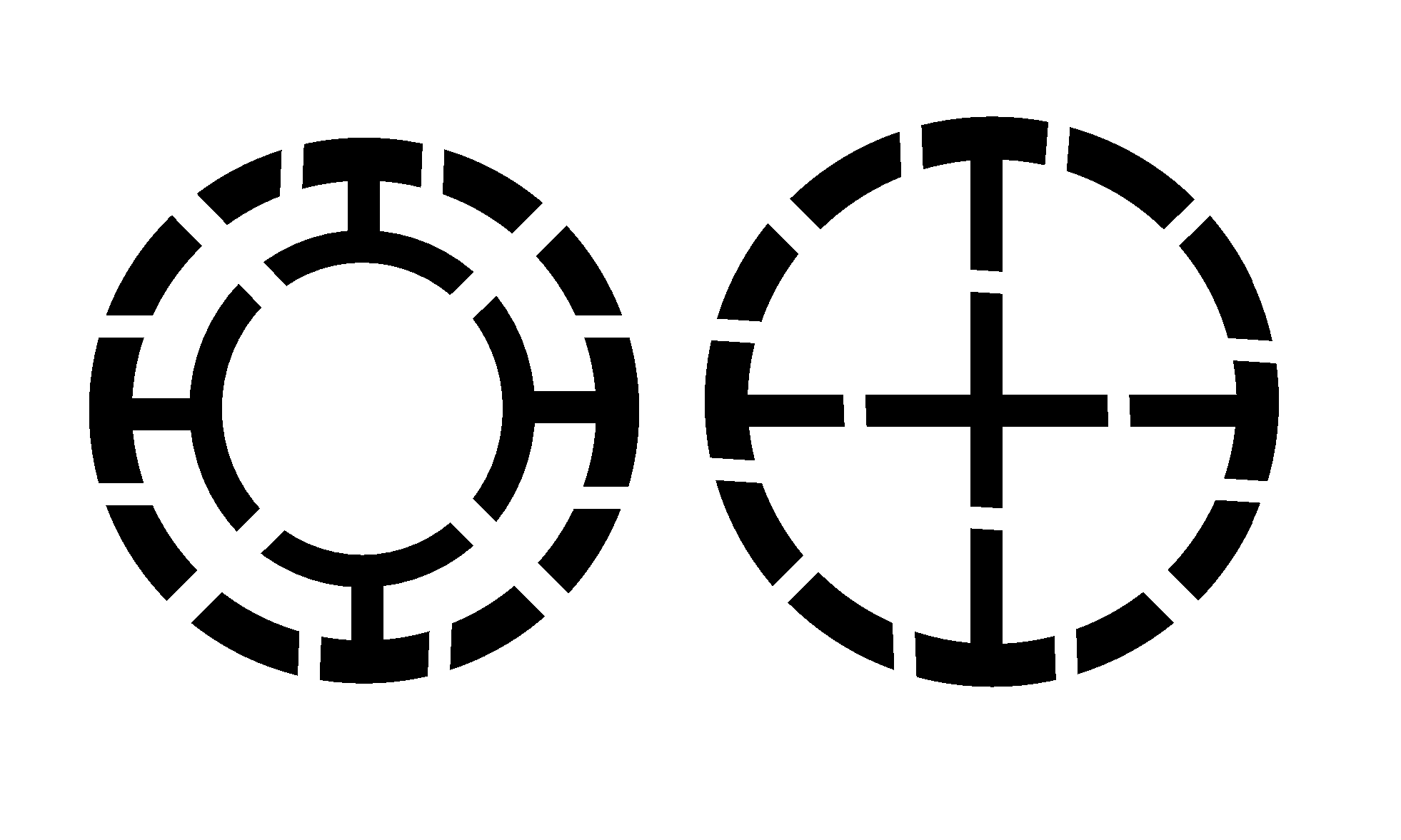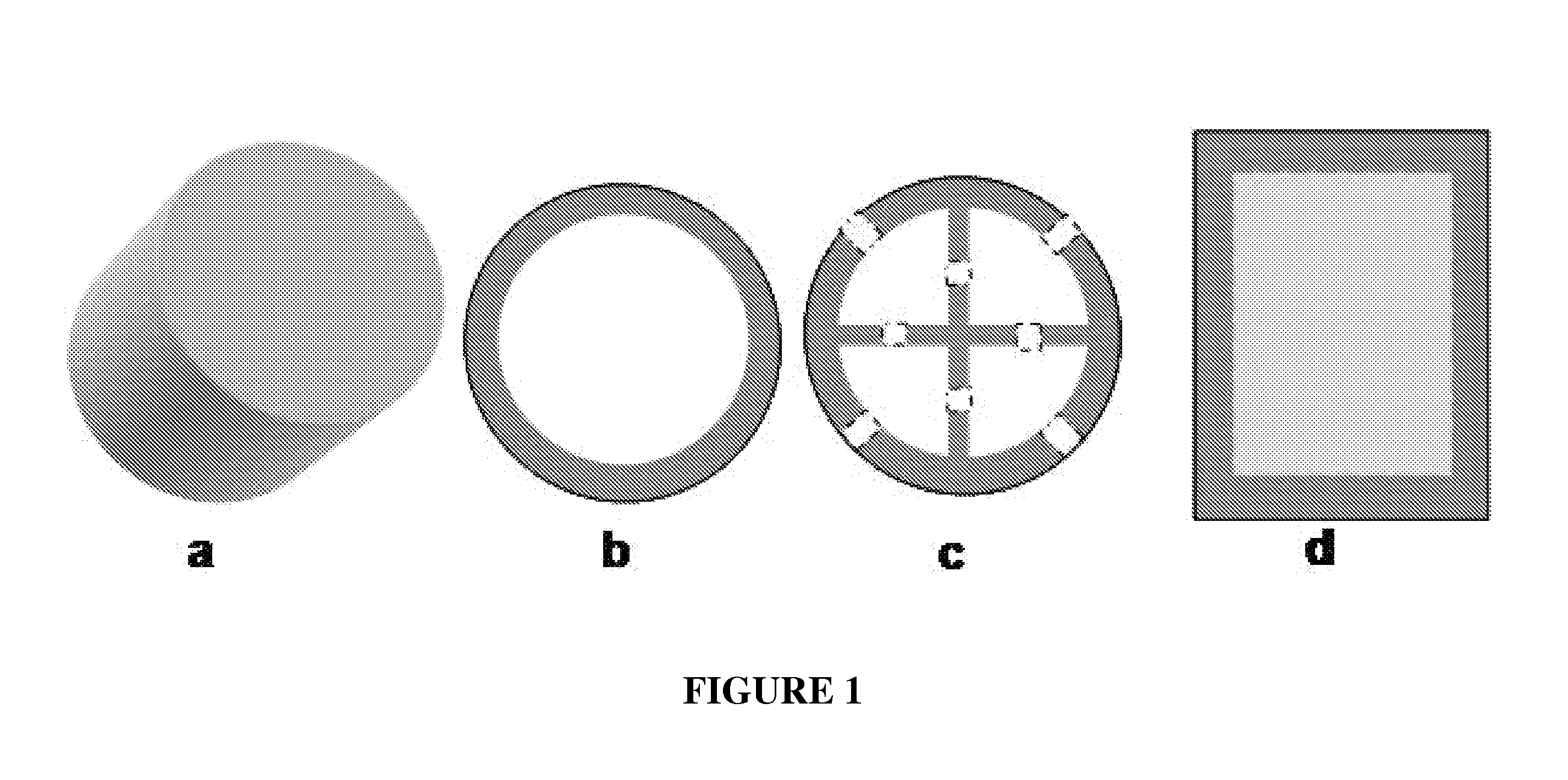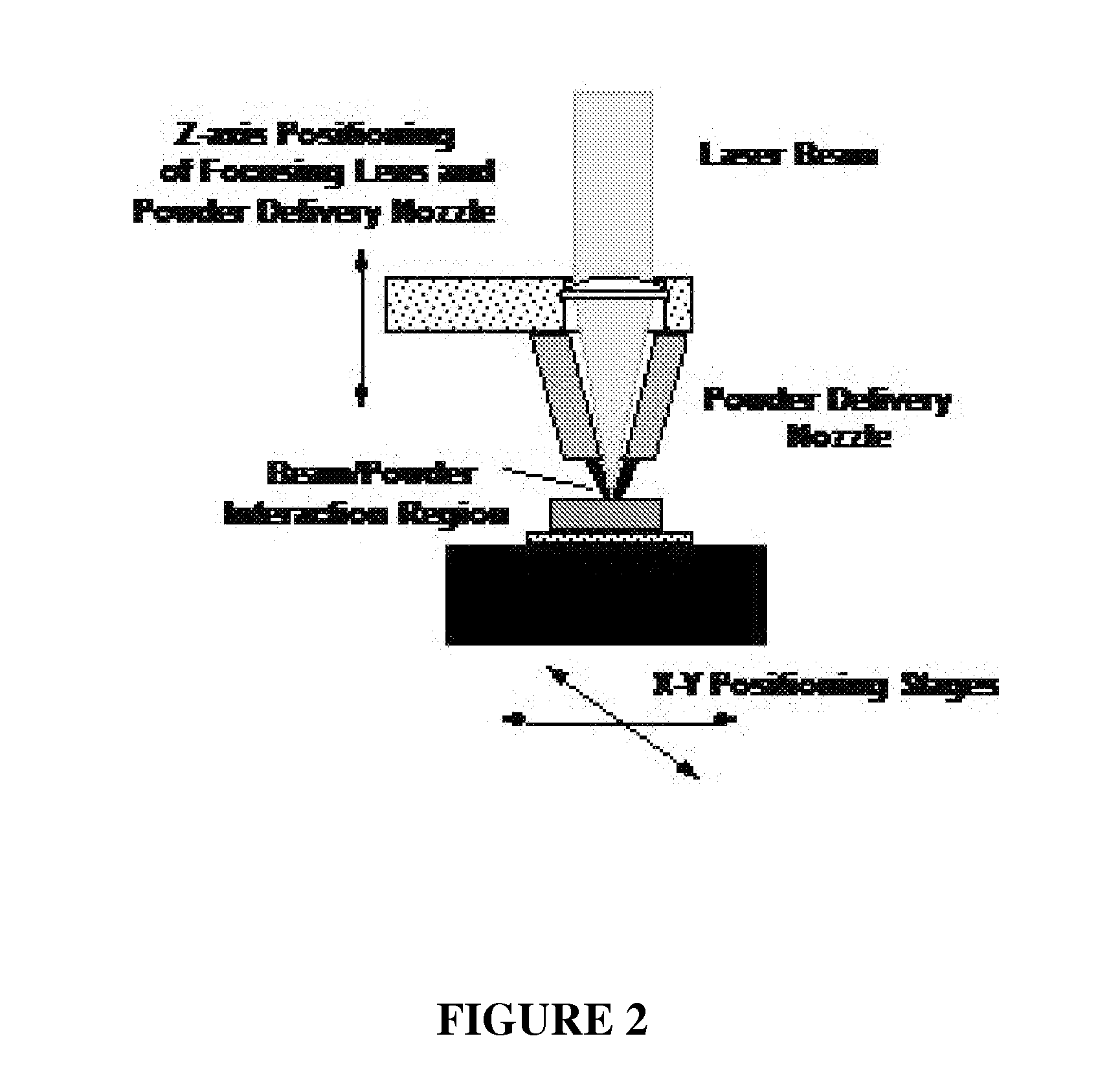Bone replacement materials
a bone and bone technology, applied in the field of bone and bone replacement materials, can solve the problems of pain and joint stiffness, lack of bone replacement material that is appropriate for restoring lost structure and function, and complex and delicate structure of natural synovial joints capable of functioning under critical conditions, and achieve the effect of facilitating cell growth and/or adhesion
- Summary
- Abstract
- Description
- Claims
- Application Information
AI Technical Summary
Benefits of technology
Problems solved by technology
Method used
Image
Examples
example 1
Laser Engineered Net Shaping (LENS™) and Developing Macro-Porous Structures
[0057] Unlike many existing rapid prototyping (RP) methods, the LENS™ technology uses metal powders to create functional parts that can be used in numerous applications. A schematic representation of an exemplary LENS™ process for providing the inventive implants is depicted in FIG. 2. Briefly, a LENS 750 machine uses 500 W of Nd:YAG laser power focused onto a metal substrate to create a molten puddle on the substrate surface. Metal powder is then injected into the molten puddle to increase the material volume. The substrate is then scanned relative to the deposition apparatus to write lines of the metal with a finite width and thickness. Rastering of the part back and forth to create a pattern and fill where material is required allows a layer of material to be deposited. Finally, this procedure is repeated many times until the entire object represented in the three-dimensional CAD model is produced on the ...
example 2
Cell Growth on LENS Fabricated Macro-Porous Structures
[0063] Cell-materials interactions were studied between cp-Ti powder processed LENS parts and OPC1 human osteoblast cells (Winn '99). Cells were plated at a density of 105 cm in 100 mm tissue culture plates and cultured in McCoy's 5A medium (with L-glutamine, without phenol red and sodium bicarbonate). 5% fetal calf serum (FCS) and 5% bovine calf serum (BCS), 2.2 gm / liter sodium carbonate, 100 mg / liter streptomycin, 8 g / ml Fungizone (Gibco™ Labortories, Grand Island, N.Y.) were added in the media. LENS processed cp-Ti samples were autoclaved at 121° C. for 45 minutes.
[0064]FIG. 7 shows a SEM micrograph of OPC1 on the processed cp-Ti after 3 days in culture. It can be seen that cells attach tightly on the surface and numerous filopodia-like extensions exist between cell and surface. This result indicates that exemplary inventive LENS-processed parts are non-toxic and biocompatible.
example 3
Processing of Nano-Porous TiO2 on Ti and Cell-Materials Interaction
[0065] For nano-porous TiO2 materials, commercially pure (99.8% pure) titanium foils of 0.5 mm thickness from Supra Alloys (CA, USA) were used, which was cut into circular pieces of 12 mm diameter. Circular discs were abraded in silicon carbide paper successive grades from 600 to 1200 grit and then cleaned with distilled water in ultrasonic bath. Final polishing was performed in 1 μm alumina powder suspension. Polished titanium foils were ultrasonically rinsed in distilled water followed by isopropyl alcohol prior to anodization. For anodization, a two-electrode electrochemical anodization cell, with a platinum cathode and Ti anode, was used to fabricate the TiO2 nanotube at a constant dc voltage of 20V. Electrolyte solution was made by dissolving sodium fluoride, citric acid, 1(M) sulfuric acid in a ratio so that the final electrolyte components had F−: 0.1 mol / L, SO42−:1.0 mol / L and citric acid: 0.2 mol / L. The ele...
PUM
| Property | Measurement | Unit |
|---|---|---|
| diameter | aaaaa | aaaaa |
| diameter | aaaaa | aaaaa |
| pore sizes | aaaaa | aaaaa |
Abstract
Description
Claims
Application Information
 Login to View More
Login to View More - R&D
- Intellectual Property
- Life Sciences
- Materials
- Tech Scout
- Unparalleled Data Quality
- Higher Quality Content
- 60% Fewer Hallucinations
Browse by: Latest US Patents, China's latest patents, Technical Efficacy Thesaurus, Application Domain, Technology Topic, Popular Technical Reports.
© 2025 PatSnap. All rights reserved.Legal|Privacy policy|Modern Slavery Act Transparency Statement|Sitemap|About US| Contact US: help@patsnap.com



